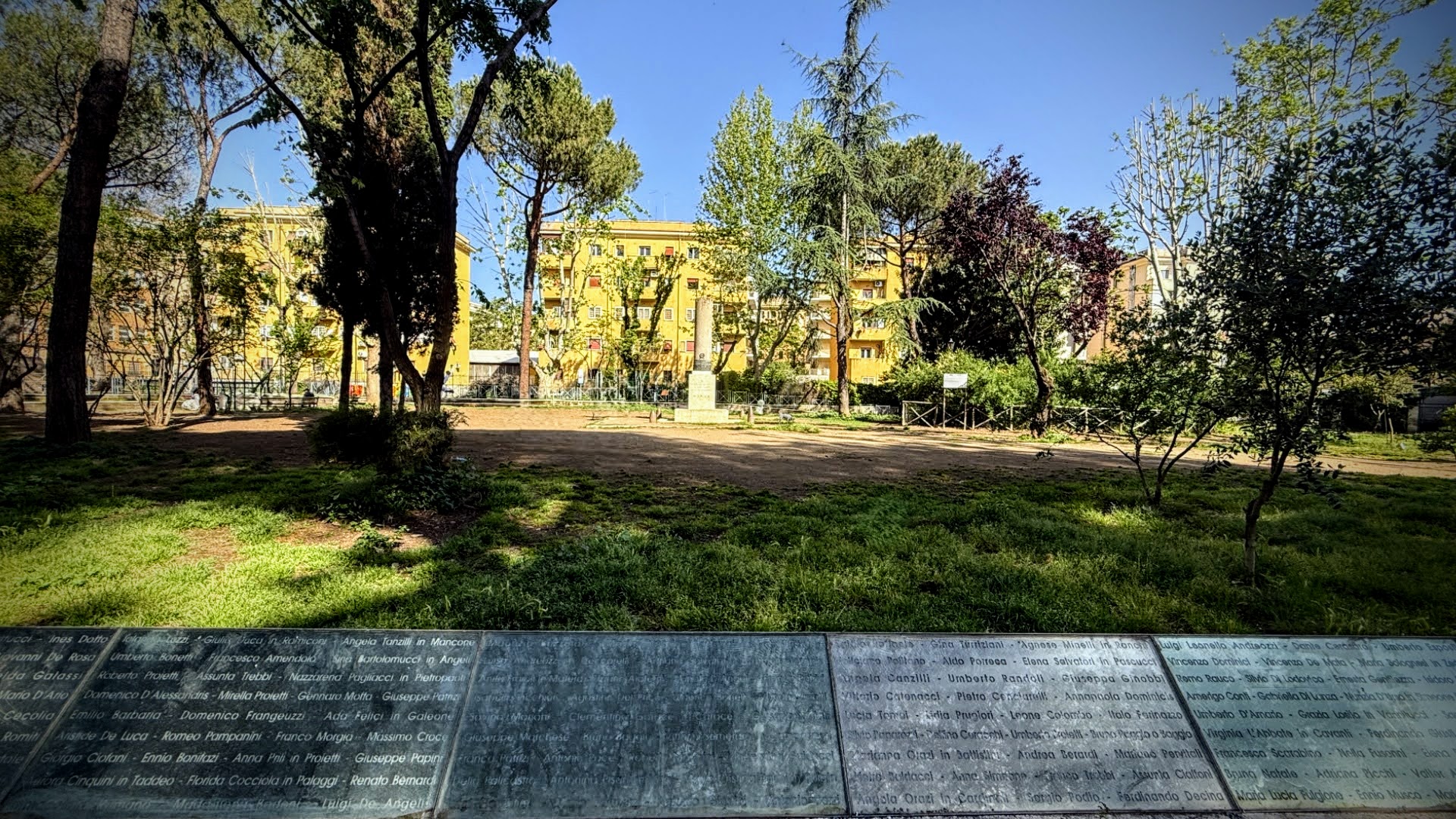
Located in the square of the same name in the San Lorenzo district, the Parco Caduti del 19 Luglio 1943 (War Memorial Park of 19 July 1943) was built to commemorate those who lost their lives during the air raids that severely affected the area and its population.
The target of the raids was Rome's central railway station, an important strategic and supply hub for the capital, but the large quantity of ordnance dropped by the 300 Anglo-American bombers, more than 4,000 bombs and over 1,000 tons of explosives, did not spare the working-class Roman neighbourhood.
Spread over an area of 5,400 square metres, the park is an important landmark and place of gathering and socialising for the inhabitants of the area. The footpath, which winds its way through the park among cercis, pines, tall cypresses, groundcover roses and magnolias, leads to a small square equipped for resting, from where a pergola with creepers extends to enclose the bowling club. One area of the park, protected by a fence, is dedicated to children's activities.
The central area, on the other hand, houses the Monumento ai Caduti (War Memorial) designed by architect Luca Zevi, winner of the contest organised by the Faculty of Architecture of Valle Giulia with Roma Capitale, and inaugurated in 2003.
The names of the 1,674 ascertained victims of the tragic 19 July bombing are engraved on the fifty metal plates that make it up. The panels, which with the 2023 restoration replaced the original glass ones on which the names were laser-etched, are more legible and are enclosed by a metal structure that runs between the park's avenues. At night, the slabs are backlit by an efficient lighting system that gives the whole a highly suggestive effect.
The Parco Caduti del 19 luglio 1943 had already been redeveloped and extended in 1997, based on the design presented by the pupils of the ‘G. Borsi’ Scuola Media Statale (State Secondary School), an idea-project that won the ‘Natura in città’ competition, promoted by Legambiente with the patronage of the Municipality of Rome, and in 2018 with maintenance and restoration work on the monument and the travertine borders of the flowerbeds.
The neighbourhood
San Lorenzo was born following the unification of the Kingdom of Italy with Rome as capital city and the subsequent demographic and urbanistic increase. It developed on a landscape dotted with fields and agricultural crops on which only the Basilica of San Lorenzo fuori le Mura (Saint Lawrence Outside the Walls) and a small sketch of the Verano Cemetery stood, quite different from the imposing monumental complex we know now.
Today, it is one of the most loved and frequented places by young Romans, by students, given its proximity to Rome's Sapienza University, and by tourists, thanks to its lively and alternative atmosphere. Its diversified offer allows you to spend carefree hours among vintage and fresh food markets, street food, traditional trattorias, ethnic restaurants, literary cafés and trendy clubs.
Strolling through its streets, you can encounter places of interest, albeit off the usual tourist routes, such as the beautiful patriarchal Basilica of San Lorenzo Fuori le Mura, an essential place of worship and one of the oldest in the city; Porta Tiburtina, one of the monumental gates to the Aurelian Walls of Rome; Villa Mercede, a beautiful park with paths lined with palm trees, pines, cedars, and lush plants, arranged on the model of landscaped gardens; the Verano Cemetery which, among ancient monumental tombs and tree-lined avenues, houses the graves of famous characters such as Goffredo Mameli, Trilussa, Eduardo De Filippo, Vittorio Gassman, Nino Manfredi, Vittorio De Sica, and Alberto Sordi.
Photo: Turismo Roma
Information
 Condividi
Condividi
Location
To find out about all accessibility services, visit the Rome accessible section.











































